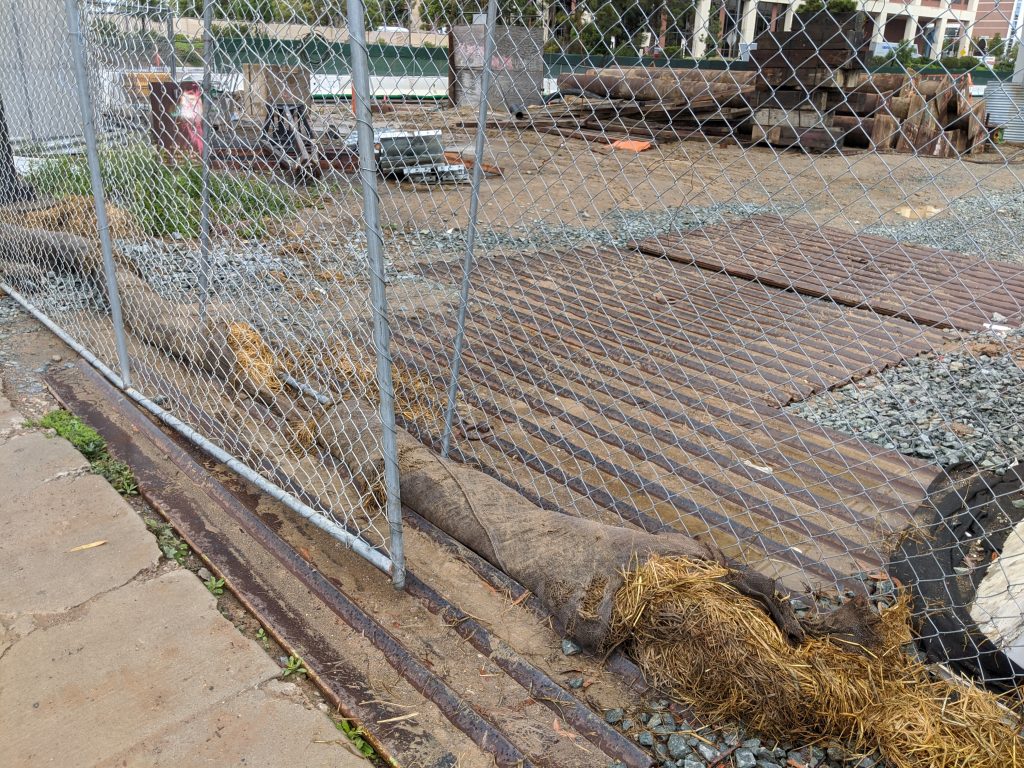When restoring hydroseeded slopes in Northern Vermont, you need to choose the right erosion control blanket to handle the challenges of snowmelt and runoff. Jute netting offers longer-lasting structural support, making it ideal for steep grades where stability is essential. In contrast, straw matting excels at promoting faster seed germination and moisture retention, making it a better option for moderate slopes where rapid vegetation establishment is the priority.

In Northern Vermont, managing slope stabilization is essential due to heavy rains, snowmelt, and the presence of sensitive watershed areas. You need erosion control methods that support hydroseeding success and guarantee soil retention, particularly on steep slopes. When choosing between jute netting and straw matting, consider that jute offers longer-lasting structural support, while straw promotes faster seed germination and better moisture retention.
Facing heavy rains, snowmelt, and the unique challenges of sensitive watershed areas in Northern Vermont, you need erosion control measures that not only protect the soil but also support the success of hydroseeding. Opt for biodegradable erosion blankets like jute netting, which provides lasting structural support and promotes soil stabilization, making it ideal for hydroseeding slope stabilization in Vermont. This guarantees your soil remains intact and your hydroseeding efforts thrive.
When dealing with steep slopes in Northern Vermont, jute netting offers a reliable, all-natural solution for long-term stability. Its coarse-woven design allows moisture to flow through while holding the soil in place, creating an ideal environment for native plant growth. Designed for use on slopes up to a 2:1 or 3:1 gradient, jute netting effectively prevents soil displacement during heavy rains and snowmelt, making it a superior choice for hydroseeded areas.
Jute netting consistently outperforms on steep slopes due to its coarse-woven and biodegradable nature, allowing for ideal moisture flow and native plant growth while effectively holding the soil in place.
When choosing straw matting for erosion control on moderate slopes in northern Vermont, you’ll benefit from its ability to enhance seed germination and retain moisture. Straw mats provide added thermal insulation, which helps shield young turf from harsh conditions, promoting healthier and faster seed establishment. This makes straw matting an excellent option for slopes that require rapid vegetation growth to stabilize the soil against snowmelt and runoff.
In the rugged northern regions of Vermont, where snowmelt and runoff can be particularly harsh, straw mats stand out as a superior choice for boosting seed establishment and protecting young turf on moderate slopes. Here’s why straw matting excels:
When deciding between jute and straw matting for erosion control on hydroseeded slopes in Northern Vermont, consider the specific needs of your project. Use jute netting for long-term, low-impact slope protection, as it provides stronger structural support and is more suitable for steeper grades and low to moderate rainfall areas.
In contrast, opt for straw matting on moderate slopes where quick seed germination and moisture retention are priority, as straw decomposes faster and promotes rapid seedling growth[2][3][4].
For effective erosion control on slopes in Northern Vermont, particularly those facing snowmelt and runoff, the choice between jute netting and straw matting is essential.
